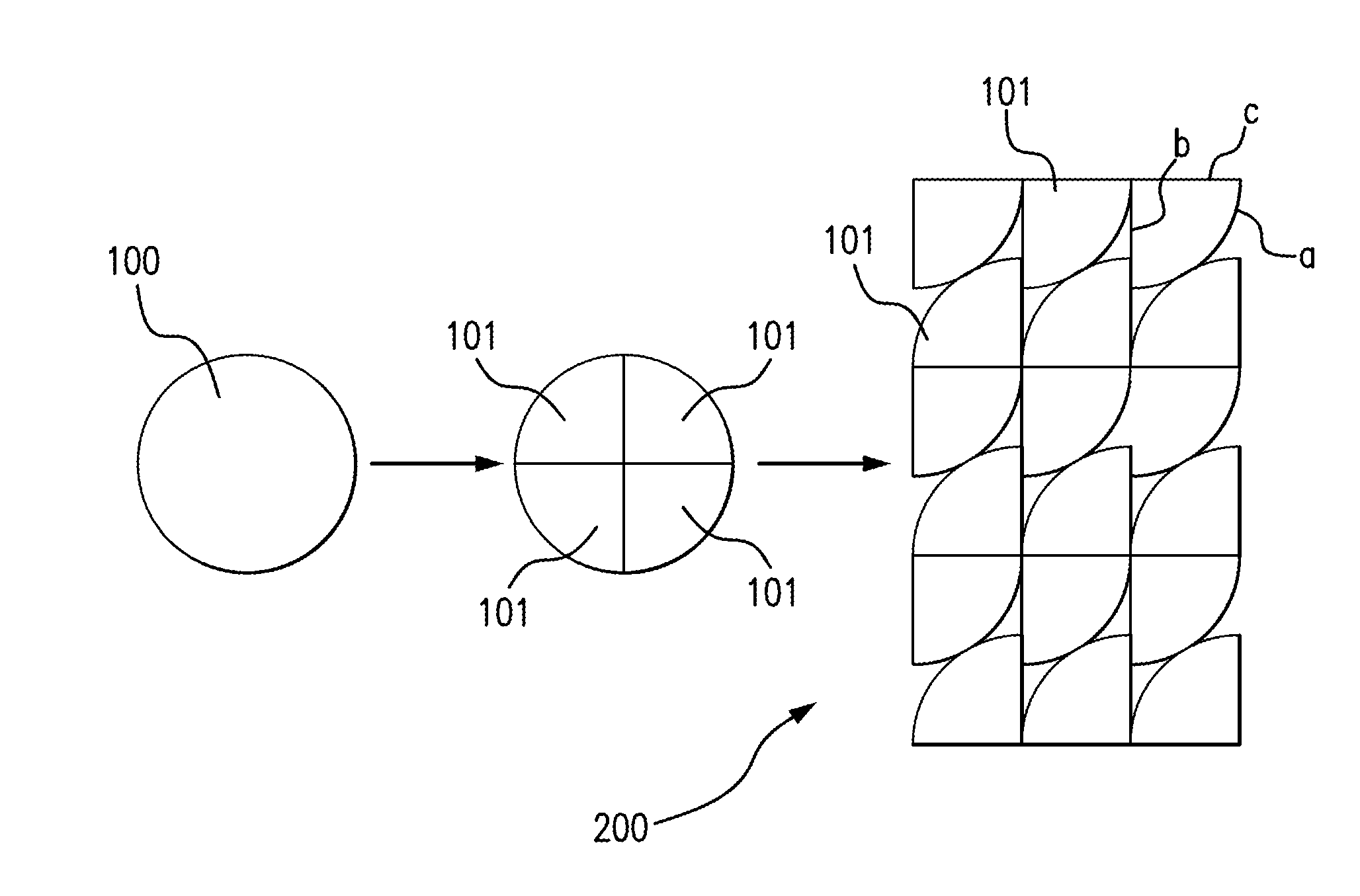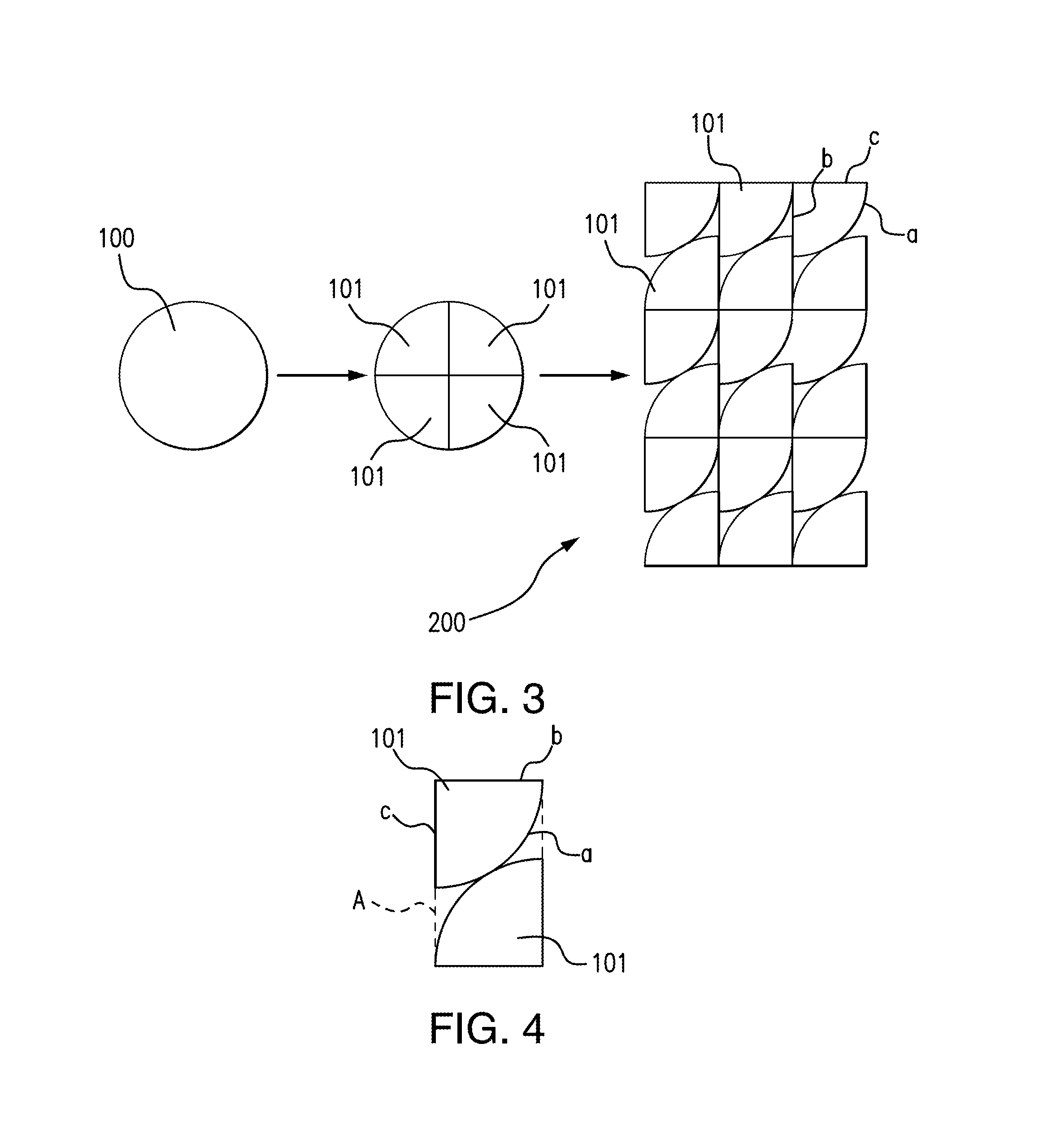Solar cell assembly comprising solar cells shaped as a portion of a circle
a solar cell and assembly technology, applied in the field of discrete solar cells, can solve the problems of inefficient use of the surface on which the solar cells are mounted, inefficient use of the available space, and increase the overall cost of the photovoltaic array or panel, so as to simplify the interconnection of solar cells
- Summary
- Abstract
- Description
- Claims
- Application Information
AI Technical Summary
Benefits of technology
Problems solved by technology
Method used
Image
Examples
Embodiment Construction
[0034]FIG. 3 schematically illustrates how, in accordance with an embodiment of the disclosure, a substantially circular solar cell wafer 100 is divided into four sectors (in the figure, the sectors are quadrants), thus producing four solar cells 101 each having a curved edge a, corresponding to the arc portion of the circumference of the circular wafer 100, and two substantially straight edges b and c extending at a right angle (90 degrees). These solar cells can be packed to form a solar cell assembly 200 as illustrated in FIG. 3, that is, in accordance with a pattern formed by an array of equal rectangles or “unit cells” A (as shown in FIG. 4), these rectangles being arranged adjacent to each other forming an array. Each rectangle encompasses two solar cells 101, fitting efficiently into the area of the rectangle or unit cell A as shown in FIG. 4. These unit cells can fill a rectangular panel or surface with a fill factor of 100%. For example, the solar cell assembly 200 of FIG. ...
PUM
 Login to View More
Login to View More Abstract
Description
Claims
Application Information
 Login to View More
Login to View More - R&D
- Intellectual Property
- Life Sciences
- Materials
- Tech Scout
- Unparalleled Data Quality
- Higher Quality Content
- 60% Fewer Hallucinations
Browse by: Latest US Patents, China's latest patents, Technical Efficacy Thesaurus, Application Domain, Technology Topic, Popular Technical Reports.
© 2025 PatSnap. All rights reserved.Legal|Privacy policy|Modern Slavery Act Transparency Statement|Sitemap|About US| Contact US: help@patsnap.com



